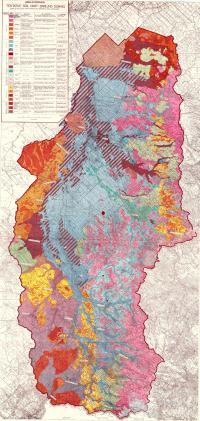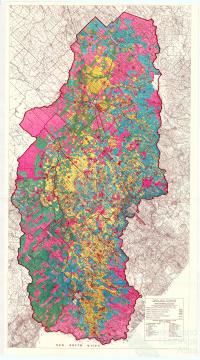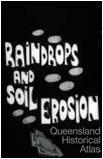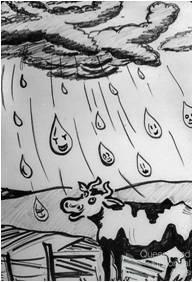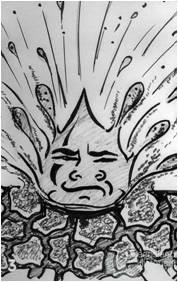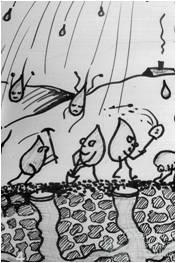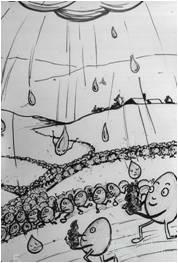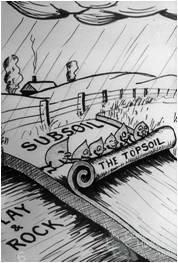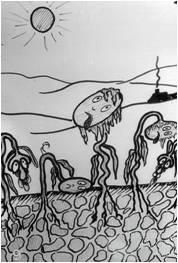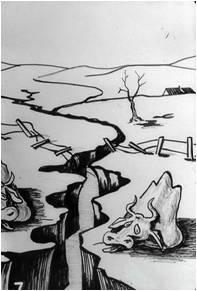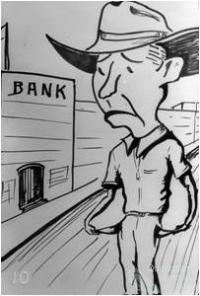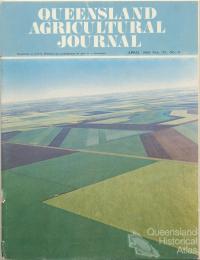- Home
- Quintessential Queensland
- Distinctiveness
- Perceptions
- Perceptions: how people understand the landscape
- From runs to closer settlement
- Geological survey of Queensland
- Mapping a new colony, 1860-80
- Mapping the Torres Strait: from TI to Magani Malu and Zenadh Kes
- Order in Paradise: a colonial gold field
- Queensland atlas, 1865
- Queensland mapping since 1900
- Queensland: the slogan state
- Rainforests of North Queensland
- Walkabout
- Queenslanders
- Queenslanders: people in the landscape
- Aboriginal heroes: episodes in the colonial landscape
- Australian South Sea Islanders
- Cane fields and solidarity in the multiethnic north
- Chinatowns
- Colonial immigration to Queensland
- Greek Cafés in the landscape of Queensland
- Hispanics and human rights in Queensland’s public spaces
- Italians in north Queensland
- Lebanese in rural Queensland
- Queensland clothing
- Queensland for ‘the best kind of population, primary producers’
- Too remote, too primitive and too expensive: Scandinavian settlers in colonial Queensland
- Distance
- Movement
- Movement: how people move through the landscape
- Air travel in Queensland
- Bicycling through Brisbane, 1896
- Cobb & Co
- Journey to Hayman Island, 1938
- Law and story-strings
- Mobile kids: children’s explorations of Cherbourg
- Movable heritage of North Queensland
- Passages to India: military linkages with Queensland
- The Queen in Queensland, 1954
- Transient Chinese in colonial Queensland
- Travelling times by rail
- Pathways
- Pathways: how things move through the landscape and where they are made
- Aboriginal dreaming paths and trading ways
- Chinese traders in the nineteenth century
- Introducing the cane toad
- Pituri bag
- Press and the media
- Radio in Queensland
- Red Cross Society and World War I in Queensland
- The telephone in Queensland
- Where did the trams go?
- ‘A little bit of love for me and a murder for my old man’: the Queensland Bush Book Club
- Movement
- Division
- Separation
- Separation: divisions in the landscape
- Asylums in the landscape
- Brisbane River
- Changing landscape of radicalism
- Civil government boundaries
- Convict Brisbane
- Dividing Queensland - Pauline Hanson’s One Nation Party
- High water mark: the shifting electoral landscape 2001-12
- Hospitals in the landscape
- Indigenous health
- Palm Island
- Secession movements
- Separate spheres: gender and dress codes
- Separating land, separating culture
- Stone walls do a prison make: law on the landscape
- The 1967 Referendum – the State comes together?
- Utopian communities
- Whiteness in the tropics
- Conflict
- Conflict: how people contest the landscape
- A tale of two elections – One Nation and political protest
- Battle of Brisbane – Australian masculinity under threat
- Dangerous spaces - youth politics in Brisbane, 1960s-70s
- Fortress Queensland 1942-45
- Grassy hills: colonial defence and coastal forts
- Great Shearers’ Strike of 1891
- Iwasaki project
- Johannes Bjelke-Petersen: straddling a barbed wire fence
- Mount Etna: Queensland's longest environmental conflict
- Native Police
- Skyrail Cairns (Research notes)
- Staunch but conservative – the trade union movement in Rockhampton
- The Chinese question
- Thomas Wentworth Wills and Cullin-la-ringo Station
- Separation
- Dreaming
- Imagination
- Imagination: how people have imagined Queensland
- Brisbane River and Moreton Bay: Thomas Welsby
- Changing views of the Glasshouse Mountains
- Imagining Queensland in film and television production
- Jacaranda
- Literary mapping of Brisbane in the 1990s
- Looking at Mount Coot-tha
- Mapping the Macqueen farm
- Mapping the mythic: Hugh Sawrey's ‘outback’
- People’s Republic of Woodford
- Poinsettia city: Brisbane’s flower
- The Pineapple Girl
- The writers of Tamborine Mountain
- Vance and Nettie Palmer
- Memory
- Memory: how people remember the landscape
- Anna Wickham: the memory of a moment
- Berajondo and Mill Point: remembering place and landscape
- Cemeteries in the landscape
- Landscapes of memory: Tjapukai Dance Theatre and Laura Festival
- Monuments and memory: T.J. Byrnes and T.J. Ryan
- Out where the dead towns lie
- Queensland in miniature: the Brisbane Exhibition
- Roadside ++++ memorials
- Shipwrecks as graves
- The Dame in the tropics: Nellie Melba
- Tinnenburra
- Vanished heritage
- War memorials
- Curiosity
- Curiosity: knowledge through the landscape
- A playground for science: Great Barrier Reef
- Duboisia hopwoodii: a colonial curiosity
- Great Artesian Basin: water from deeper down
- In search of Landsborough
- James Cook’s hundred days in Queensland
- Mutual curiosity – Aboriginal people and explorers
- Queensland Acclimatisation Society
- Queensland’s own sea monster: a curious tale of loss and regret
- St Lucia: degrees of landscape
- Townsville’s Mount St John Zoo
- Imagination
- Development
- Exploitation
- Transformation
- Transformation: how the landscape has changed and been modified
- Cultivation
- Empire and agribusiness: the Australian Mercantile Land and Finance Company
- Gold
- Kill, cure, or strangle: Atherton Tablelands
- National parks in Queensland
- Pastoralism 1860s–1915
- Prickly pear
- Repurchasing estates: the transformation of Durundur
- Soil
- Sugar
- Sunshine Coast
- The Brigalow
- Walter Reid Cultural Centre, Rockhampton: back again
- Survival
- Survival: how the landscape impacts on people
- Brisbane floods: 1893 to the summer of sorrow
- City of the Damned: how the media embraced the Brisbane floods
- Depression era
- Did Clem Jones save Brisbane from flood?
- Droughts and floods and rail
- Missions and reserves
- Queensland British Food Corporation
- Rockhampton’s great flood of 1918
- Station homesteads
- Tropical cyclones
- Wreck of the Quetta
- Pleasure
- Pleasure: how people enjoy the landscape
- Bushwalking in Queensland
- Cherbourg that’s my home: celebrating landscape through song
- Creating rural attractions
- Festivals
- Queer pleasure: masculinity, male homosexuality and public space
- Railway refreshment rooms
- Regional cinema
- Schoolies week: a festival of misrule
- The sporting landscape
- Visiting the Great Barrier Reef
By:
Bruce Carey I used to put my dairy herd in that paddock, and if all of the cows stood in the bottom of a gully at the same time, you couldn’t see a beast in the paddock!
That’s the way Sandy Huston recalled the erosion damage to his Darling Downs farm in the 1940s, when much of Queensland’s dairying and cropping lands had been seriously transformed by soil erosion, as quoted in Harvests and heartaches in 1988.
Soil erosion has been responsible for shaping the face of Queensland. Erosion is capable of breaking down the hardest of rocks and wearing away the highest of mountains. But when landscapes are used for food production, mining or urban development, the rate of erosion is greatly accelerated. The result is a decline in the productivity of the land as well as an adverse impact on the quality of runoff that feeds creeks and rivers and flows into oceans.
Prior to European settlement, Indigenous people frequently used fire in the landscape to drive out animals they were hunting, and burned off dry grass to promote fresh green growth to attract animals. Such burning had an impact on the ecological development of the landscape including the species composition of the native vegetation. But this impact was less significant when compared to the changes following European settlement of Queensland in the nineteenth century.
Queensland has great variations in climate, soils and topography. Annual rainfall varies from 3000 mm per year in the Wet Tropics to only 125 mm in the arid areas of the southwest. Around 75% of the state is used for grazing of cattle and sheep. The growing of agricultural crops is limited to only 2% of the state where suitable combinations of soils, climate and topography exist.
Disaster paddocks
Pastoral occupation took place from the 1840s after the Leslie Brothers had ‘squatted’ on the Darling Downs. Other squatters soon followed. The extreme variability of the Queensland climate created problems for graziers. Excessive stocking during periods of below average rainfall removed protective plant cover and exposed soil to wind and water erosion. It was increasingly clear following the Great Drought of 1898-1902 that pastoralists in the west of Queensland had overstocked their land.
By 1950 a relatively small amount of land was being cultivated for growing crops like wheat and maize on the Darling Downs and the South Burnett and sugar cane and horticultural crops along the coast. By this time soil erosion had become a serious problem. In 1950 the Queensland agricultural journal reported that 16,000 ha of land on the Darling Downs had become so badly eroded that it could no longer be cultivated.
Factors contributing to the erosion problem were the steep slopes that were often cultivated and the management practices that led to a lack of surface cover on the soil.
The land surface is usually covered by plants or the mulch provided by dead plant materials. Crop harvests were usually followed by burning crop stubble and then cultivating the soil whenever weeds began to emerge. These practices left the soil in a bare condition and exposed to the impact of heavy raindrops.
Soil conservation
The Queensland Government commenced a program to counter the serious erosion threat. In 1935 Frank Skinner, the State’s first soil conservation extension officer had surveyed the first contour banks to control erosion at what was then known as the Willowburn Mental Hospital on the northern outskirts of Toowoomba. Following his recommendations, in 1948 a number of demonstration farms were established on farms with serious erosion problems and which were readily visible to the travelling public. Field days on these farms in the 1950s attracted widespread interest with up to 700 farmers attending. While contour banks and waterways were necessary in cultivated land to manage runoff and avoid the development of deep gullies, the need to improve the levels of surface cover was also apparent.
Since the 1950s there have been significant improvements in the adoption of soil conservation practices. The disaster paddocks that were once a feature of cropping lands are in the past. Many steep paddocks that were once cultivated have been returned to pastures or trees. Practices like zero tillage are providing 100% cover to the soil. Most cane farmers have abandoned the burning of cane and their soil is now protected with a ‘blanket’ of green cane trash.
Graziers are recognising the value of using more conservative stocking rates that match seasonal conditions. This strategy ensures a more productive pasture and reduced vulnerability to the dry years that are a certainty in the highly variable weather conditions that are a feature of Queensland’s climate.
The Landcare movement of the late 1980s, regional natural resource management bodies and agricultural industry groups worked with government agencies to promote sustainable agricultural industries.
You can still detect the sites of the big gullies on Sandy Huston’s block but today you couldn’t hide a cat in them let alone a cow. Vigilance and the continued adaptation of management practices is required to maintain the future productivity of agricultural land.
References and Further reading (Note):
T. Barker and Ian Byford (comp), Harvests and heartache: images and stories of Queensland’s agricultural past, Queensland Department of Primary Industries, 1988
References and Further reading (Note):
Bruce Carey (ed), Opportunities to achieve the sustainable use and management of land in Queensland, Australian Society of Soil Science Inc (Queensland Branch), 2008
References and Further reading (Note):
J.E. Ladewig, and A.F. Skinner, ‘Soil conservation in Queensland – general aspects’, Queensland agricultural journal, 70, 1950
References and Further reading (Note):
Bruce Carey, Achieving soil conservation in Queensland – a pictorial history, 2012 in Queensland Landcare web site: https://dl.dropboxusercontent.com/u/40874340/2013%20Qlinks/1302/Achieving-soil-conservation-in-Queensland.pdf
References and Further reading (Note):
Bruce Carey, A study guide on contour banks, 2014, in Landcare Queensland web site http://landcare.org.au/resources-links/achieving-soil-conservation-in-queensland/
References and Further reading (Note):
Bruce Carey, A study guide on grassed waterways for erosion control in cropping lands, 2014, in Landcare Queensland web site http://landcare.org.au/resources-links/achieving-soil-conservation-in-queensland/

